It's mid-October 2011 and we've got some time off. We're all great fans of Frederick II, the Hohenstaufen Holy Roman Emperor and King of Sicily, so now's our chance.
You may not find this terribly rewarding unless you're included here, so this is a good time for casual and random browsers to turn back before they get too caught up in the sweep and majesty of the proceedings and can't let go.
There's the Muson River 1894 waiting for trade in the cathedral square in Lecce -- we're bolting past in a headlong race across town for the train to Ostuni.
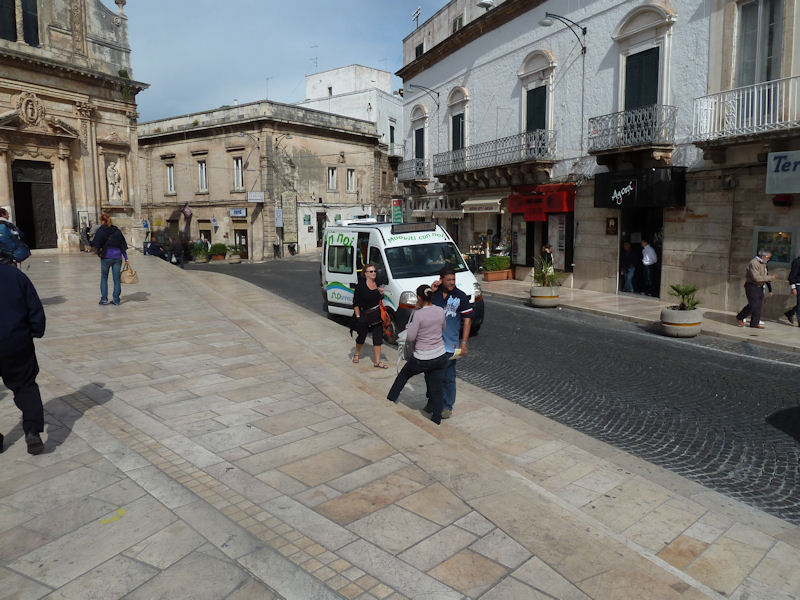
We got off the train at the Ostuni station near the coast -- no Ostuni. Nothing. Nothing but a cute little shuttlebus to drive us 8km inland up to a gleaming white city on the hilltop. And here we are.

Safely disembarked in the Piazza della Libertà, we're staring at the lofty statue of Sant'Oronzo. Saint Orontius seems to have wandered off track at some point, because he's the patron saint of Lecce and we just left him an hour ago presiding over his own town square. But here he is, right here in Liberty Square and appropriated as Ostuni's own patron saint after he saved the town from the plague that swept through the Salento region in 1657. The statue dates from 1771 and keeps the plague away.
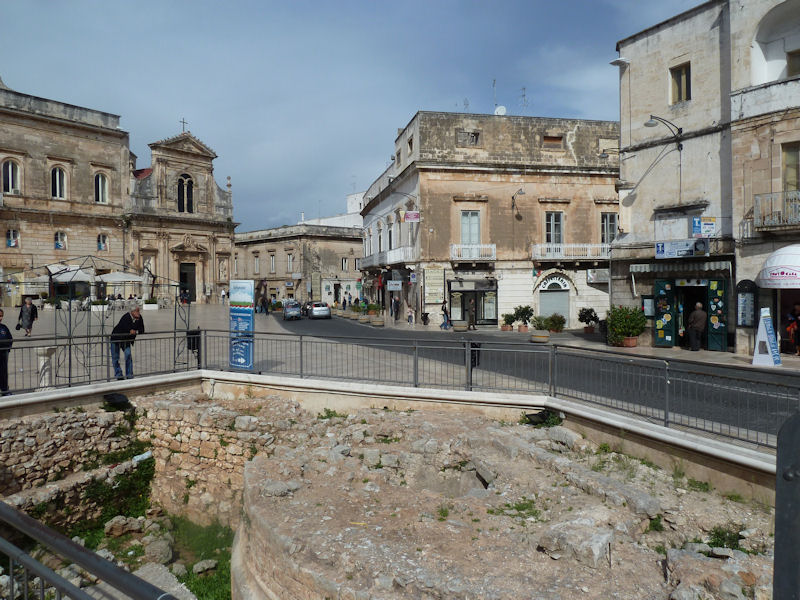
It might be thought that a town that would steal somebody else's patron saint is rather arriviste, but Ostuni's got genuine Roman remains right here in the Piazza della Libertà (and Neolithic habitations nearby). And anyway Saint Orontius, a local boy who was made Bishop of Lecce by Saint Paul even before there were any other Christians in the Salento, and later martyred (with an axe), is still a cult figure throughout the whole peninsula. He frequently cures cholera and what not.

Though "Ostuni" comes from the Byzantine Greek for "new town" (when it was rebuilt after Hannibal took it all apart for strategic advantage), we're walking up into the new town's "old town", the fortified citadel on the seaward promontory at the top of the hill.

There's a genuine charm to the old alleyways and photogenic archways everywhere, but it's offputtingly a very commercialized venue -- development and branding personality seem to have been taken in hand some years ago by a consortium of merchants called the Associazione Borgostuni, and there is a faintly exploitive air to the place.
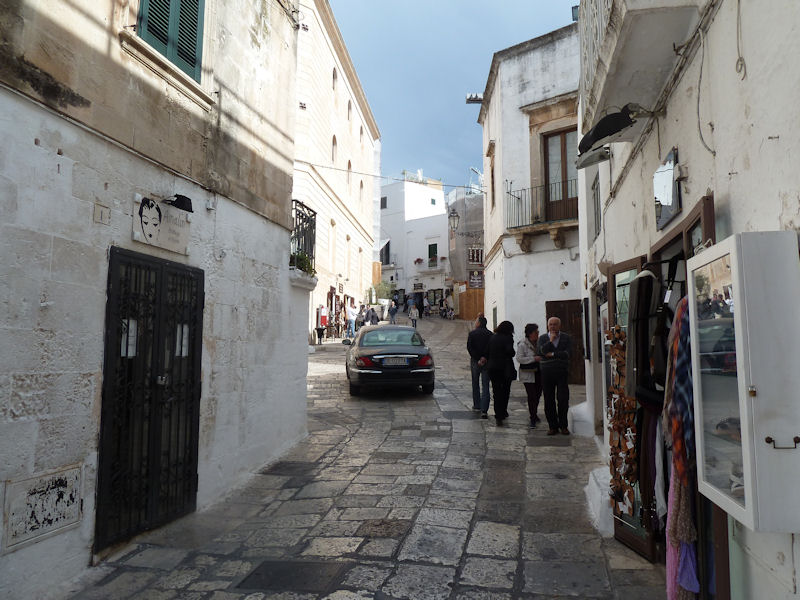
One is well aware that trade and tourism are keeping many of our favorite places alive, and that's all well and good, but there seemed to be something about Ostuni . . . . We have friends who don't agree at all about that, and particularly love the shopping opportunities, so that's that, then.

Still, Ostuni is a town of about 30,000 in the off-season that swells of more than 100,000 at midsummer. Luckily, just now the other 70,000 are all at home saving up for next summer.

Near the top of the hill, in the medieval centre, here's the Cathedral, built between 1435 and the end of the century, in its own tiny square.
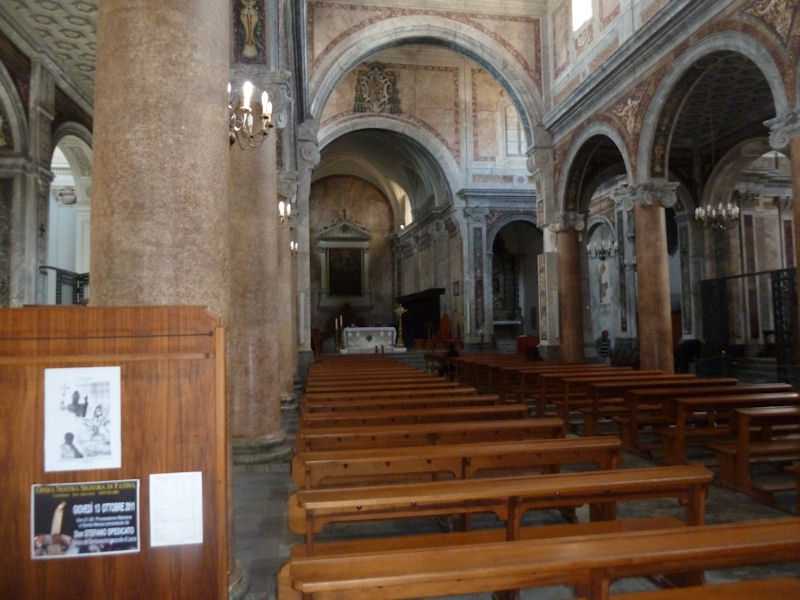
A brief look-in at the Cathdral of the Madonna Assunta

That's done. Now across the square to that brilliant archway at the top of the village.

Ostuni is famously called the "Città Bianca", the White City -- inescapable everywhere here in the old town, and a stunning vision from the plains below.

We're just wandering round in the alleys near the cathedral.

This is looking back at the cathedral through that fabulous archway.
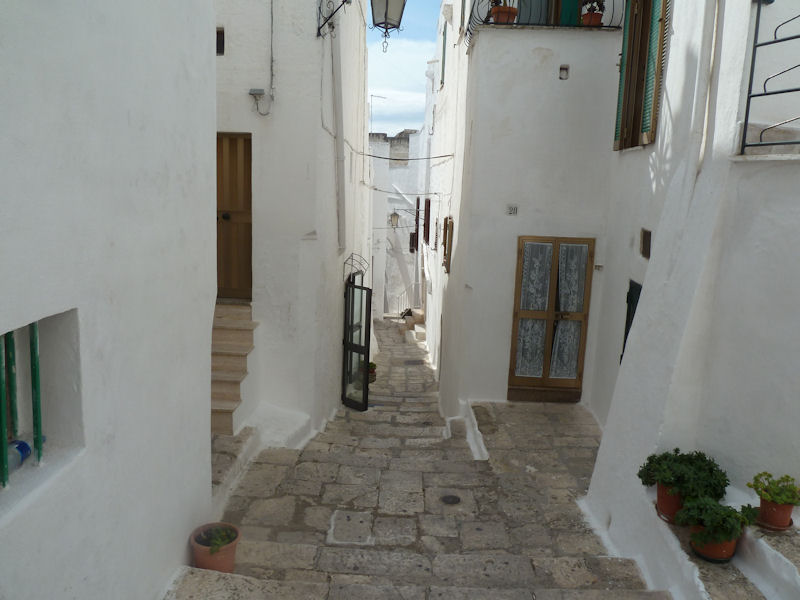
To have a bad feeling about towns with views like this is probably obstinate and wrong-headed.

Too much leisurely photography -- our guide is passing out of sight somewhere ahead.

In the early 16th century, the formidable Isabella of Naples, the Duchess of Bari (who was married to Giangaleazzo Sforza (the hapless young Duke of Milan who was dominated by his uncle Ludovico "Il Moro" and was killed at Pavia in 1494)), called in lots of humanists, writers, and artists and put Ostuni on the Renaissance map. Her daughter, the famous Bona Sforza, continued that tradition (even after she became Queen of Poland in 1518 and went away).
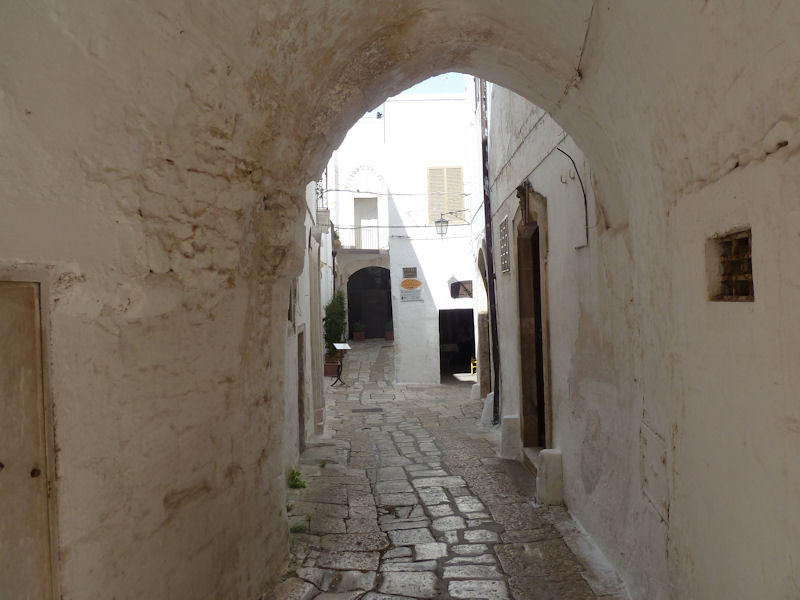
Charming alleyways

From the hilltop, a fleeting stare out at the Adriatic and surrounding olive industry

Very nice, narrow alleyways
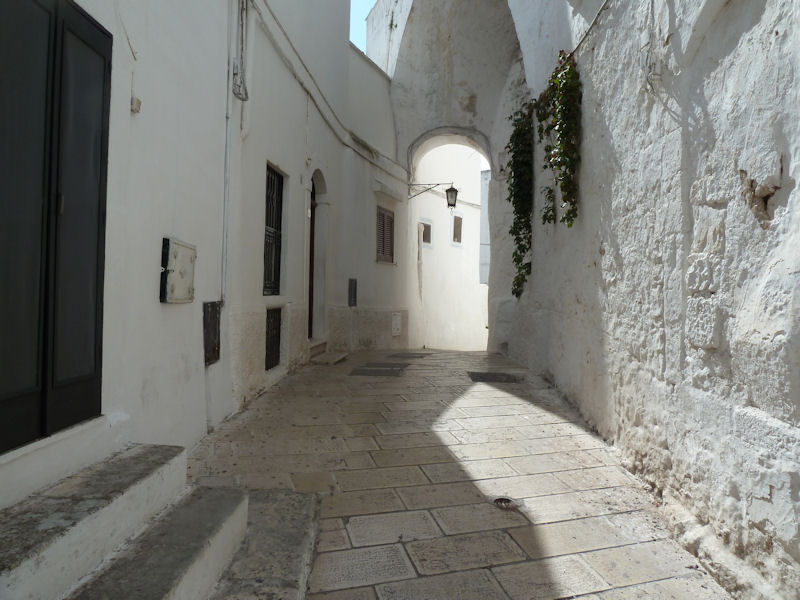
And very clean, too.
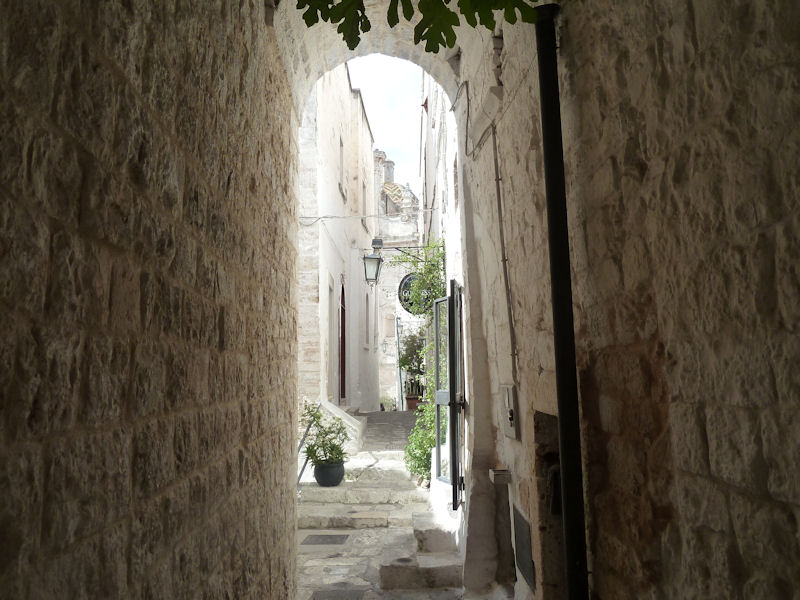
And also narrow.

The Spirito Santo church from 1637
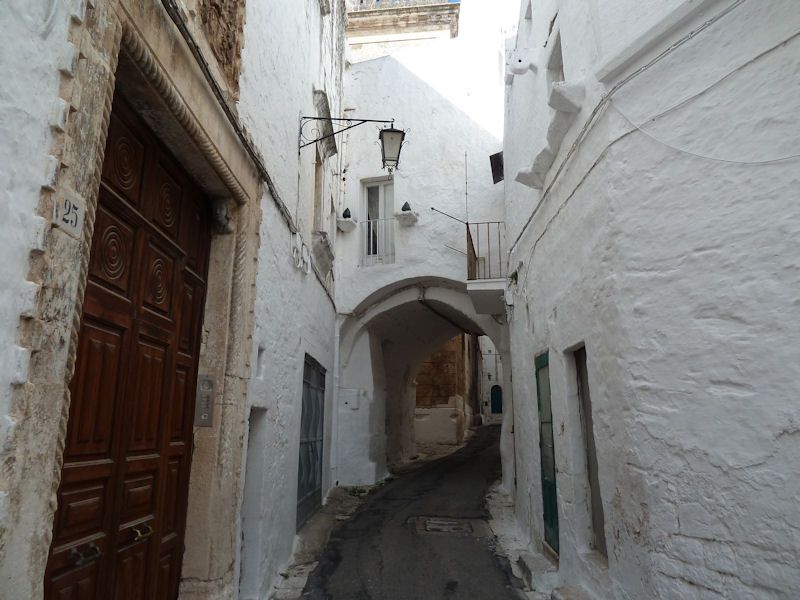
Narrow and clean, and mostly white.
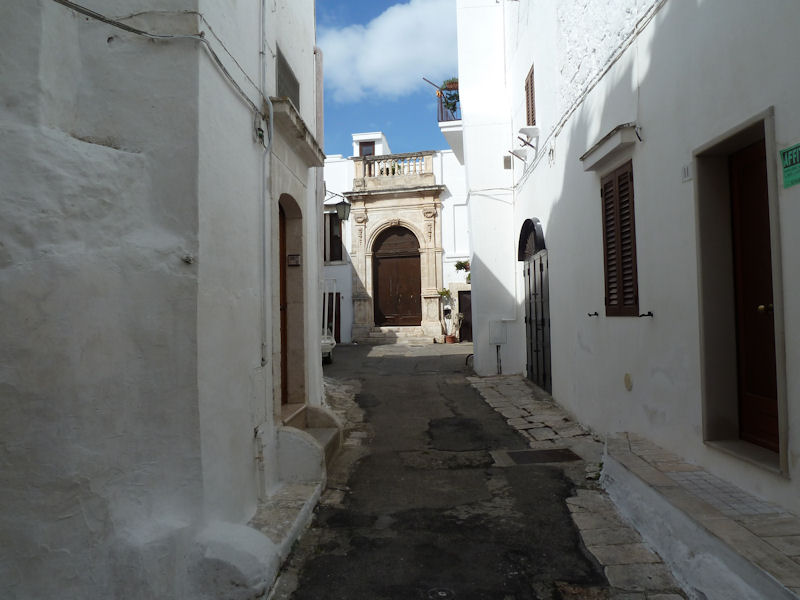
Lots of "to rent" signs (far right)

It's a lovely place . . . but we've been round all of it, and we're not planning to buy anything today, so it's back to the shuttlebus.

A nice little stair-esplanade seaward from the Guglia di Sant'Oronzo, as we're waiting for the overdue shuttle to the train station.
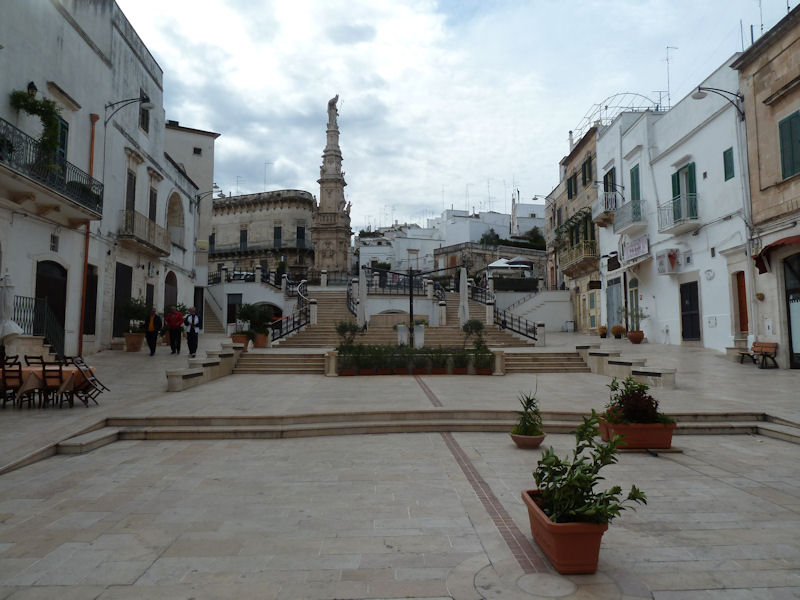
St Orontius and his stairs

Another narrow, white alleyway

After searching for and failing to find the castle of Ostuni, slowly we caught on that the castle is the town.

The citadel is the whole medieval town itself.
Back to Lecce
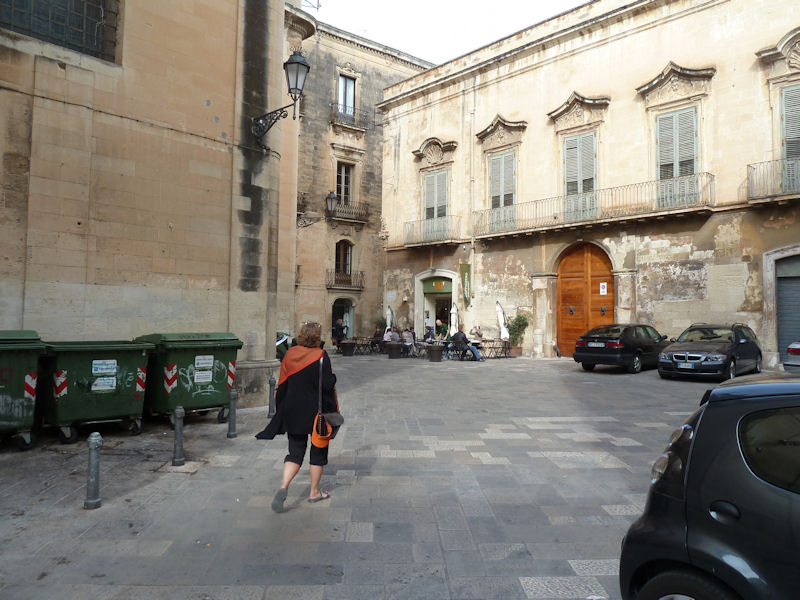
But now we're back in Lecce, looking for a proper castle and a snack.

They're packing up the street market just behind the castle of Lecce.
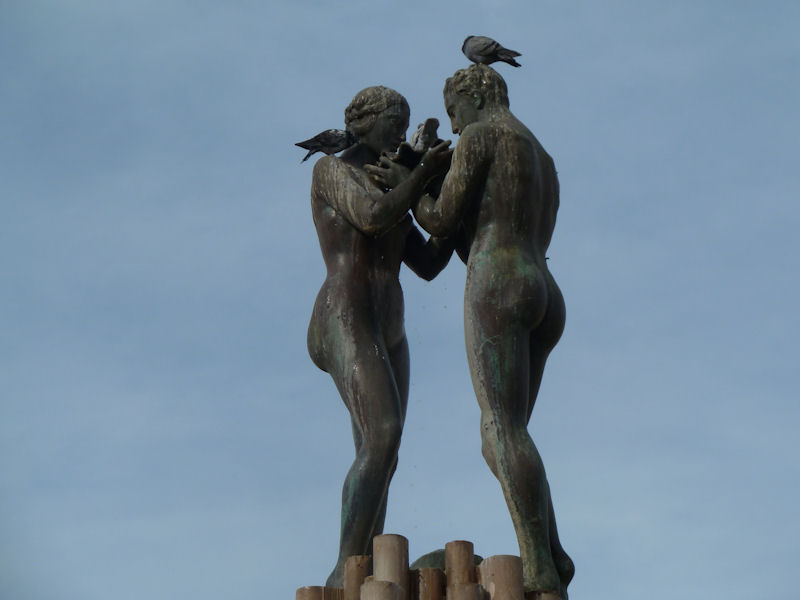
Bird lovers . . .
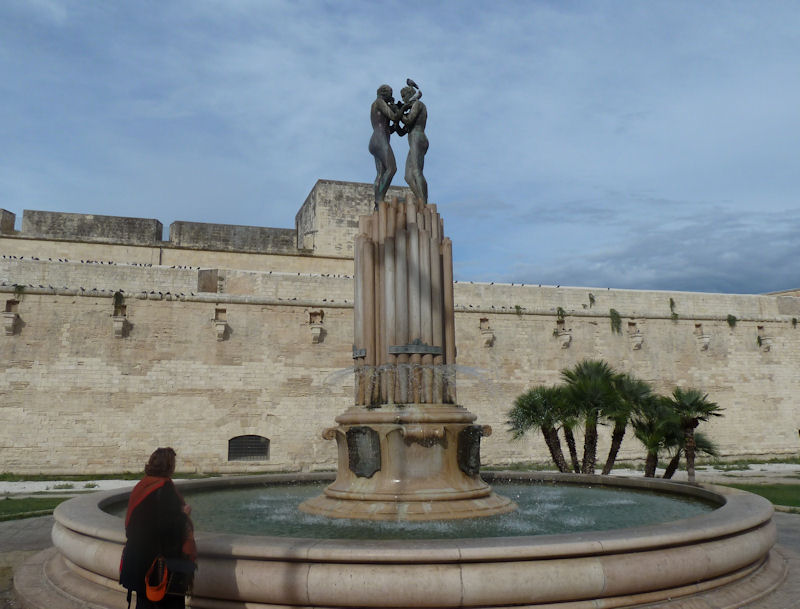
. . . bird lovers who are permanently communing with birds outside the Castle of Lecce, at the Fountain of Harmony.
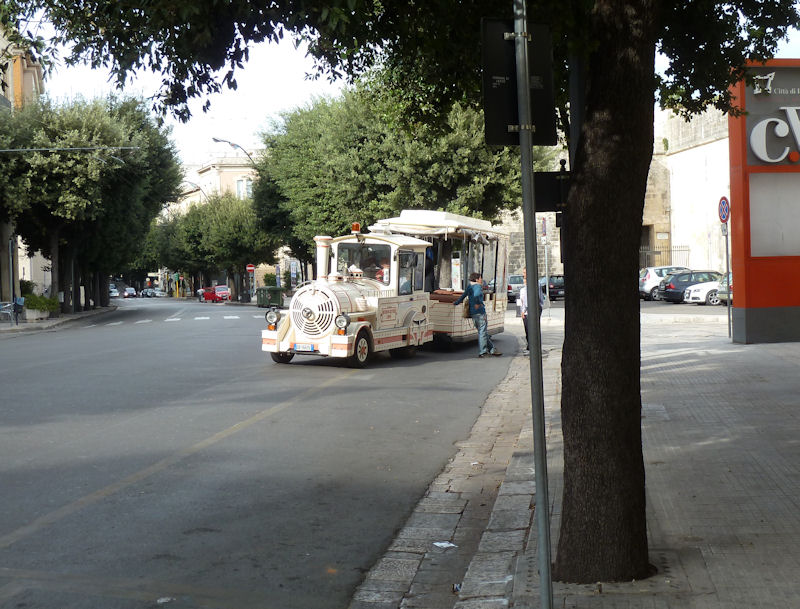
The Muson River 1894 taking a break on its appointed rounds

True love. People sign their names, lock it up, and throw away the key -- highly symbolic, and eventually regretted. On the Ponte Vecchio in Florence the city authorities, though broadly sympathetic with the motives, have to come along and saw them all off every week or so.

Sobering embellishments on the front of the Church of Santa Croce, which is tacked onto the side of the Provincial Prefecture, the Palazzo dei Celestini from the late 17th century.

More unhappiness

The inside of Lecce's Charles V Castle, built in 1539, a formidable work with four large artillery bastions at the eastern side of town

Old art and new art (no need to choose one or the other just now).
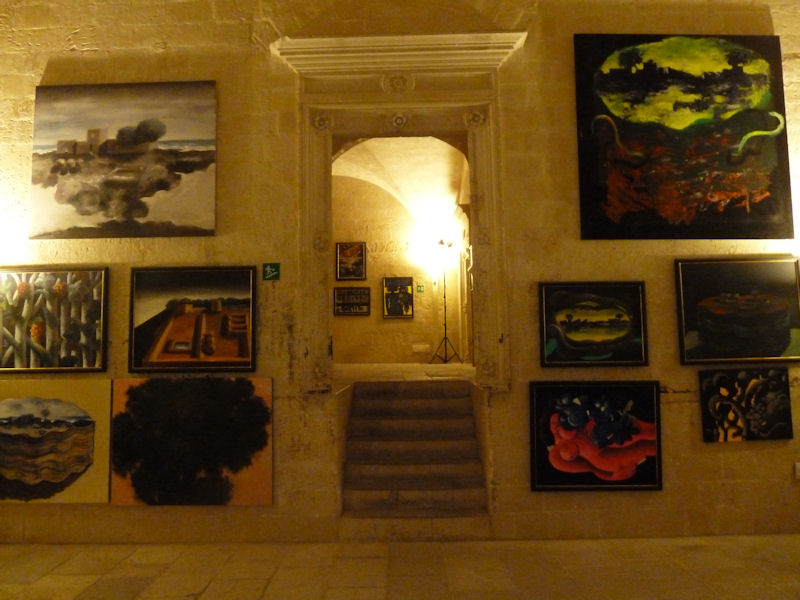
Art exhibitions within the Castle of Charles V -- in recent years, the cultural affairs people have taken over the castle, replacing its military administrative occupants.
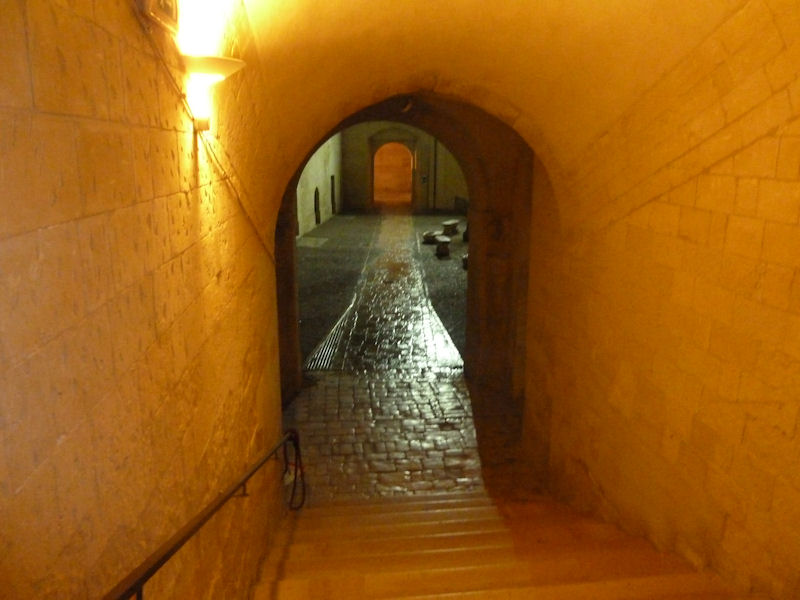
Down the stairs and back out into the rainy courtyard

The castle courtyard at night

The papier-mâché museum in the castle basement, celebrating a famous art form in the region

Pick one. My favorite is the one on the right.
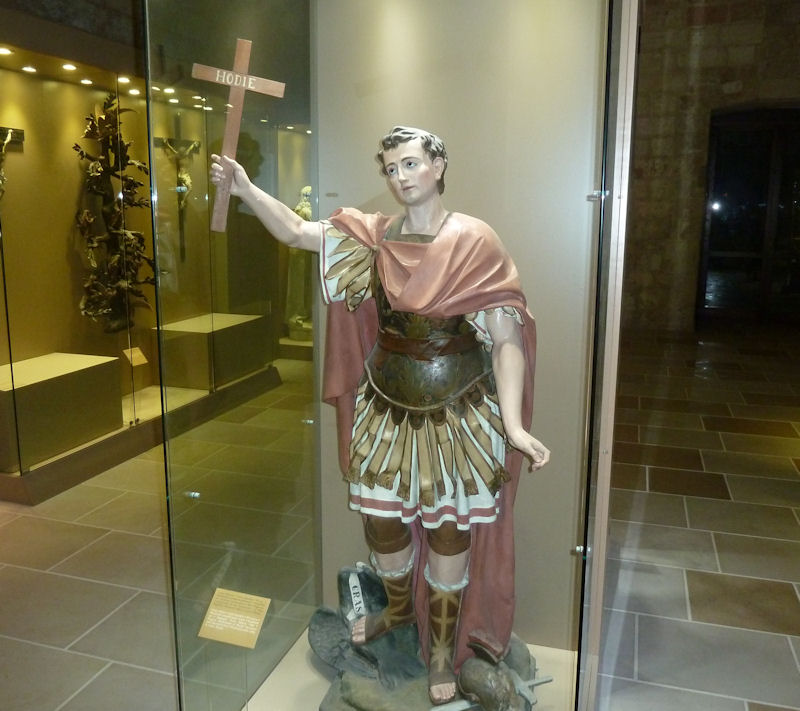
A sad looking gentleman with his Hodie sign: Today Christ is born / Today the Savior appears / Today the angels are singing, and what not. Alas, we don't have time today to wait -- tomorrow we're going to Rome on the train.
The train to Rome

A four hour journey to Rome, seated opposite an Irish gentleman and two Irish ladies, who became louder and louder as the day progressed.

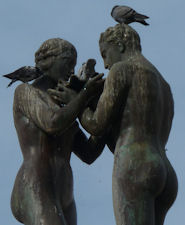 Dwight Peck's personal website
Dwight Peck's personal website






















































